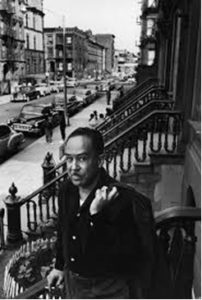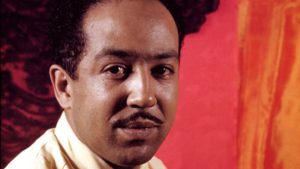
Dreams(夢)
Langston Hughes(ラングストン・ヒューズ)
Hold fast to dreams
(夢を持ち続けよう)
For if dreams die
(もし夢が死んでしまったら)
Life is a broken-winged bird
(人生は翼の折れた鳥のように)
That cannot fly.
(飛べない鳥だ)
Hold fast to dreams
(夢を持ち続けよう)
For when dreams go
(夢が無くなった時)
Life is a barren field
(人生は不毛の地となる)
Frozen with snow.
(雪で凍った不毛の地だ)
1922
Hughes is a figure of the Harlem Renaissance, the flourishing of black artistic achievement centered in the Harlem neighborhood of New York City during the 1920s. Hughes was widely traveled, and his aesthetic and political views were informed by the wider perspective of an international black community embracing Paris, Africa, and the Caribbean. The poem “Dreams” comes from Hughes collection “The Weary Blues,” which describes aspects of inequality and life in segregated America and was written at the beginning of Hughes’s career. It brought him popularity in the black community as a leading poet and representative voice, as well as in the American scene at large.
(from A Study Guide for Langston Hughes’s “The Weary Blues”)
By Gale, Cengage Learning
ヒューズは、1920年代にニューヨーク市のハーレム地区を中心に栄えた黒人の芸術的成果であるハーレム・ルネサンスを代表する人物です。 ヒューズは広く旅をしました。パリ、アフリカ、カリブ海沿岸諸国を含む国際的な黒人コミュニティの持つより広い視点によって、彼の美的、政治的見解は深められました。詩「Dreams」は、ヒューズの詩集「The Weary Blues」から取られたものです。この詩集は、人種によって分断されたアメリカにおける不平等と生活の諸相を描いていて、ヒューズの詩作歴の初期に書かれました。 この詩集によって、彼は先導的な詩人として、また代弁者として、黒人のコミュニティにおいても、アメリカ全体においても人気を博したのです。





